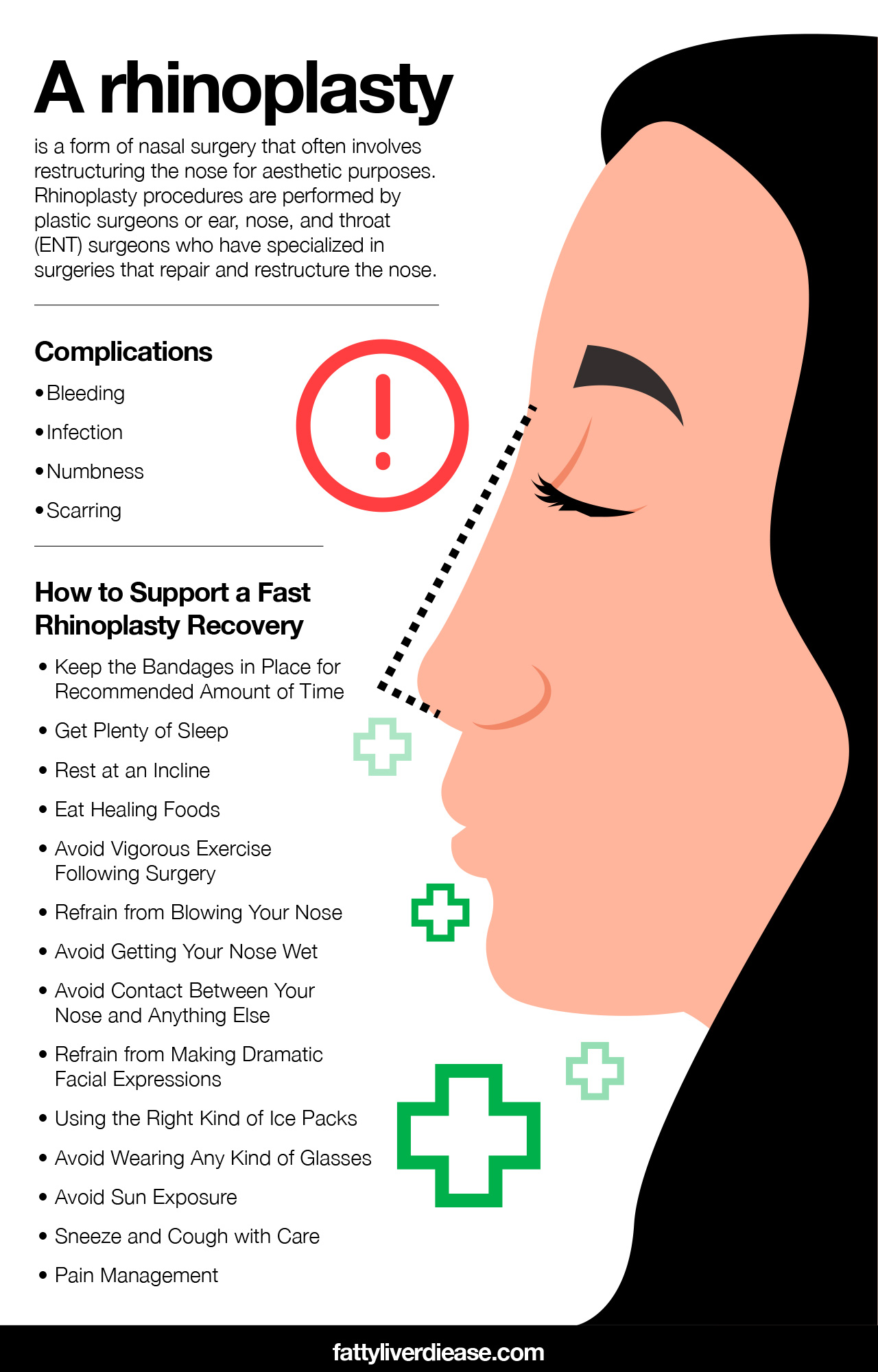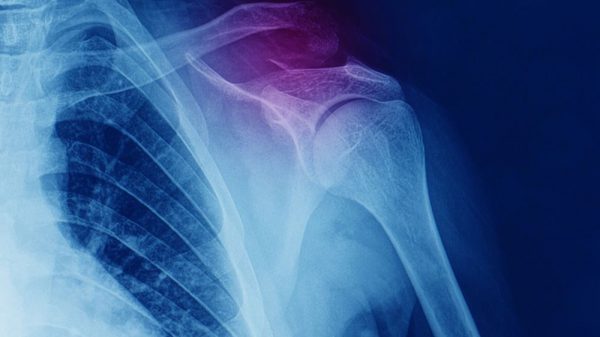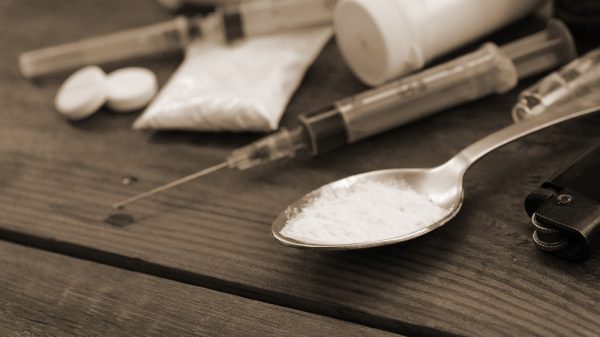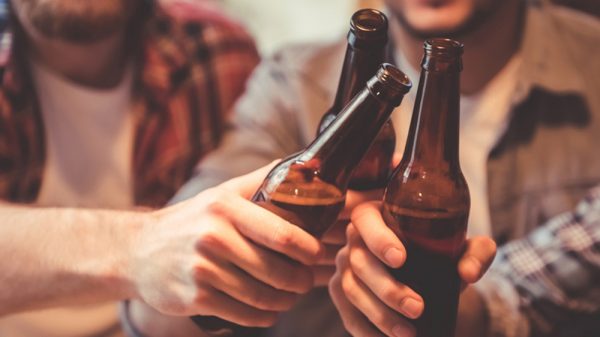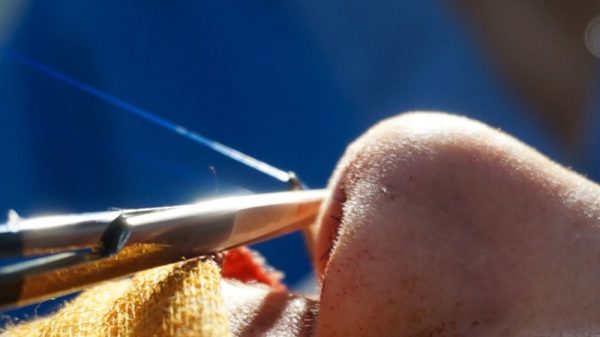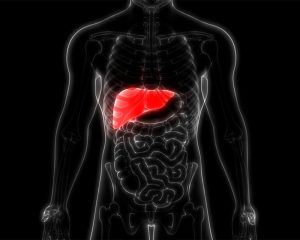Rhinoplasty is a popular surgical procedure that involves reshaping the nose. Also referred to as a nose job, a rhinoplasty is often performed for aesthetic reasons or to correct a deviated septum. If you’re booked for a rhinoplasty, you probably are wondering what to expect during the procedure and throughout the healing process.
Keep reading to find out more about what to expect during a rhinoplasty procedure and how to support a fast rhinoplasty recovery.
What Is a Rhinoplasty?
A rhinoplasty is a form of nasal surgery that often involves restructuring the nose for aesthetic purposes. Rhinoplasty is often described as a type of facial plastic surgery and might be associated with other cosmetic procedures like facelifts, lip injections, or brow lifts. A rhinoplasty procedure may also be performed to improve the function of the nose.
A rhinoplasty procedure may also be coupled with a septoplasty, which is a procedure that repairs a deviated septum. The septum refers to the bony structure that supplies the central support for the nasal structure. The septum runs up the center of the nose and splits the nasal cavity into two sections. If the septum is crooked, it can jeopardize airflow through one of the nasal passages. A septoplasty corrects any septum deformities.
What to Expect During a Rhinoplasty
Rhinoplasty procedures are performed by plastic surgeons or ear, nose, and throat (ENT) surgeons who have specialized in surgeries that repair and restructure the nose. A rhinoplasty is an outpatient procedure, meaning that you can leave the hospital on the same day that you came in for the surgery.
If the rhinoplasty is conducted as a cosmetic procedure, the plastic surgeon will focus primarily on reshaping the bone, cartilage, and skin in a way that complements your face and is in line with your preoperative discussions. If the rhinoplasty also involves a septoplasty, the surgeon will correct the septum while also reshaping the nose if necessary or if the patient desires.
Because each individual has a very uniquely shaped nose, it is difficult to predict how long a rhinoplasty will take. Some procedures may just need an hour, while other procedures may last up to 3 hours. After the procedure, you will be wheeled into the recovery room in the hospital for monitoring until you are discharged.
Rhinoplasty recovery time may vary from person to person. After about a week, you should be able to resume most of your normal activities. Swelling may persist for up to a month, and your nose will further settle into its shape over the next year.
Complications
As with all surgeries, undergoing a rhinoplasty procedure comes with risks. Keep in mind that complications are rare. However, it’s still important to be aware of them. Here are a few of the possible complications.
- Bleeding: Excess bleeding is a possibility during a rhinoplasty procedure.
- Infection: During any surgery, the exposure of tissues to the air may introduce airborne particles to the wound, which can lead to an overgrowth of bacteria and infection.
- Numbness: It’s possible that nerves will be affected as a result of surgical incisions, which can cause loss of feeling in certain areas, such as the tip of the nose.
- Scarring: Scarring is a possible side effect of undergoing a rhinoplasty procedure.
How to Support a Fast Rhinoplasty Recovery
If you’ve undergone a rhinoplasty, your goal is to enjoy your new nose as soon as possible. If you’ve recently undergone a rhinoplasty, you might be asking yourself: “How can I take care of your nose following surgery? And how can I reduce swelling?” We answer all of your questions in the following section. Here are some key steps to follow when it comes to supporting a fast and effective recovery.
1. Keep the Bandages in Place for Recommended Amount of Time
Following your rhinoplasty procedure, the surgeon will put in place bandages and soft splints to protect your healing nose and maintain its new shape as it heals. Be sure to keep these on for the recommended amount of time. Removing these protective coverings prematurely increases your risk of nose injury and infection.
2. Get Plenty of Sleep
If you want your new nose to heal quickly, getting lots of sleep is a good strategy. The body works hard while we sleep to repair tissues and eliminate oxidative stress. When we sleep, the body doesn’t need resources to fuel normal, daily processes. As a result, the body can channel these resources and energy towards repairing injuries and stress-related damage.
3. Rest at an Incline
In the days immediately following surgery, it’s a good idea to avoid lying all the way down when you rest or sleep. Lying at an incline keeps excess blood out of the head and face, which helps reduce swelling. Sleeping upright on the first night following surgery is especially important since it allows for blood and fluids to drain from the nostrils.
4. Eat Healing Foods
After a rhinoplasty procedure, the body has a tough job of repairing many different types of tissue, including, skin, cartilage, and bone. Following a procedure such as a rhinoplasty, the immune system gets to work healing the affected site. So, how can you speed up healing? You can expedite the healing process by eating foods that support the immune system. Eating an abundance of immune-boosting foods will expedite the healing process. Here are a few foods you should incorporate into your post-rhinoplasty diet.
Fiber
Fiber is a crucial nutrient that helps support the digestive system. But did you know that eating lots of fiber can also help the body recover from an injury or illness? Fiber comes in two forms: soluble fiber and insoluble fiber. Soluble fiber breaks down in the presence of water, while insoluble fiber proceeds through the digestive system intact. All forms of fiber feed healthy bacteria in the microbiome, which release anti-inflammatory compounds that travel through the bloodstream and support a healthy immune system response.
Protein
Eating plenty of high-quality protein helps speed up healing times after a surgical procedure, such as a rhinoplasty. Protein provides essential amino acids that are vital for synthesizing muscle tissue and neurotransmitters, as well as healing tissues. Under normal circumstances, the body requires a careful balance of essential amino acids to support normal day-to-day biological functions.
When the body is recovering from injury or illness, the body uses essential amino acids at a faster rate, and therefore requires more on a daily basis. You can get optimal ratios of essential amino acids from animal products like chicken, fish, and yogurt. If you follow a plant-based diet, you must be sure to eat a variety of vegetable proteins throughout the day, in order to get the essential amino acids you need. Good examples of vegetable proteins include whole grains, nuts, seeds, beans, and tofu. Since your body requires more essential amino acids following surgery, you may benefit from using a carefully formulated supplement during the recovery period.
Micronutrients
Micronutrients are small compounds that facilitate all biological processes and activities on a cellular level. Getting sufficient micronutrient intake in your daily diet is especially important for fortifying your immune system when the body is recovering from an injury or illness. Micronutrients encompass particles like vitamins, minerals, and antioxidants. You can get these micronutrients from whole plant foods like fruits, veggies, whole grains, nuts, and seeds. To support recovery from your nose surgery, choose to eat foods like kale, broccoli, spinach, apples, blueberries, pecans, walnuts, almonds, and sweet potatoes on a regular basis.
5. Avoid Vigorous Exercise Following Surgery
In the days after your procedure, your nose is very fragile and must heal. Avoid vigorous exercise of all forms post-surgery. Engaging in strenuous exercise may dislodge the bandages and put you at risk of injuring your healing nose. Moreover, strenuous activity increases blood flow and temporarily increases blood pressure, meaning more blood makes it to the head and face. Increased blood pressure and blood flow may put you at risk for bleeding.
6. Refrain from Blowing Your Nose
You may feel the need to blow your nose in the days following surgery, because of the drainage of fluid and mucus as the nose heals. However, blowing your nose may cause pressure and interfere with the healing process.
7. Avoid Getting Your Nose Wet
In the initial stages of healing, it’s best to avoid getting your nose wet while the bandages are still on. Keeping the nose and bandages dry and clean is helpful for preventing infection.
8. Avoid Contact Between Your Nose and Anything Else
It’s important to protect your bandaged nose following surgery. Rubbing your nose against anything – even shirts and other clothing that may need to be pulled over the head – can damage your nose and lead to re-injury and swelling.
9. Refrain from Making Dramatic Facial Expressions
Facial expressions are a fun part of being human! But try to temper them as you are recovering from a rhinoplasty. You might be surprised how involved the nose is in showing faces of happiness, anger, and disgust. Making too many facial expressions might pull at the delicate tissues on your nose and increase the risk of injury.
10. Using the Right Kind of Ice Packs
Swelling will be the most severe during the first week following your surgery. How do you make swelling go down fast? Ice! As with most injuries, cold compresses have an anti-inflammatory effect and are very helpful for soothing a swollen nose in the first 48 hours after a procedure. However, the nose is a particularly small and fragile part of the body, and is particularly vulnerable following surgery. To most effectively reduce nasal swelling, it’s important to use a cold compress that is not rigid, hard, or heavy in any way. For example, placing a bag of ice on your nose could cause more injury that requires further surgery to fix.
Keep in mind that in some cases, your surgeon may direct you not to use ice on your nose. Consult your surgeon about whether ice is appropriate for you, and the most effective strategies for icing your nose following a rhinoplasty.
11. Avoid Wearing Any Kind of Glasses
Because glasses rest on the bridge of your nose, they put pressure on your healing nose and can impact healing time and surgery results. It’s best to secure your glasses on another part of your face until your nose has healed sufficiently.
12. Avoid Sun Exposure
Getting too much sun, especially during the recovery period, can increase the risk of discoloration or scarring. Sunburn damages the skin cells covering your new nose, which tends to make scarring more obvious. Even after your nose has healed, it’s a good idea to limit sun exposure and wear sunscreen on your face and nose to protect your skin.
13. Sneeze and Cough with Care
Preventing sneezing and coughing is just about impossible, so the trick is to relieve any pressure that sneezing and coughing may place on your healing nose. This can be done by redirecting force through the mouth. If you need to sneeze or cough, do so with an open mouth and avoid stifling or holding it in, which can create more pressure in the nose and lead to bruising and bleeding.
14. Pain Management
Managing pain following a nose job surgery is crucial for a comfortable recovery. During the first day of your nose job recovery, pain and swelling will be at a peak. Your surgeon will likely have prescribed you prescription pain medication to manage pain for the first 3 days following surgery. After you stop taking prescription pain pills, you can then transition to over-the-counter medications like Tylenol. Stick to acetaminophen-based medications and avoid non-steroidal anti-inflammatory drugs (NSAIDs), which can increase the risk of bleeding.
Final Words on Rhinoplasty Recovery
You can decrease the healing time after your nasal surgery by taking care of yourself post-surgery. When you are recovering from rhinoplasty, it’s important to follow all post-care instructions in terms of pain management, bandaging, and icing your nose. Lying at an incline, reducing nasal pressure, eating healthy foods, will ensure a speedy recovery process while also helping you achieve the final results that you want.
